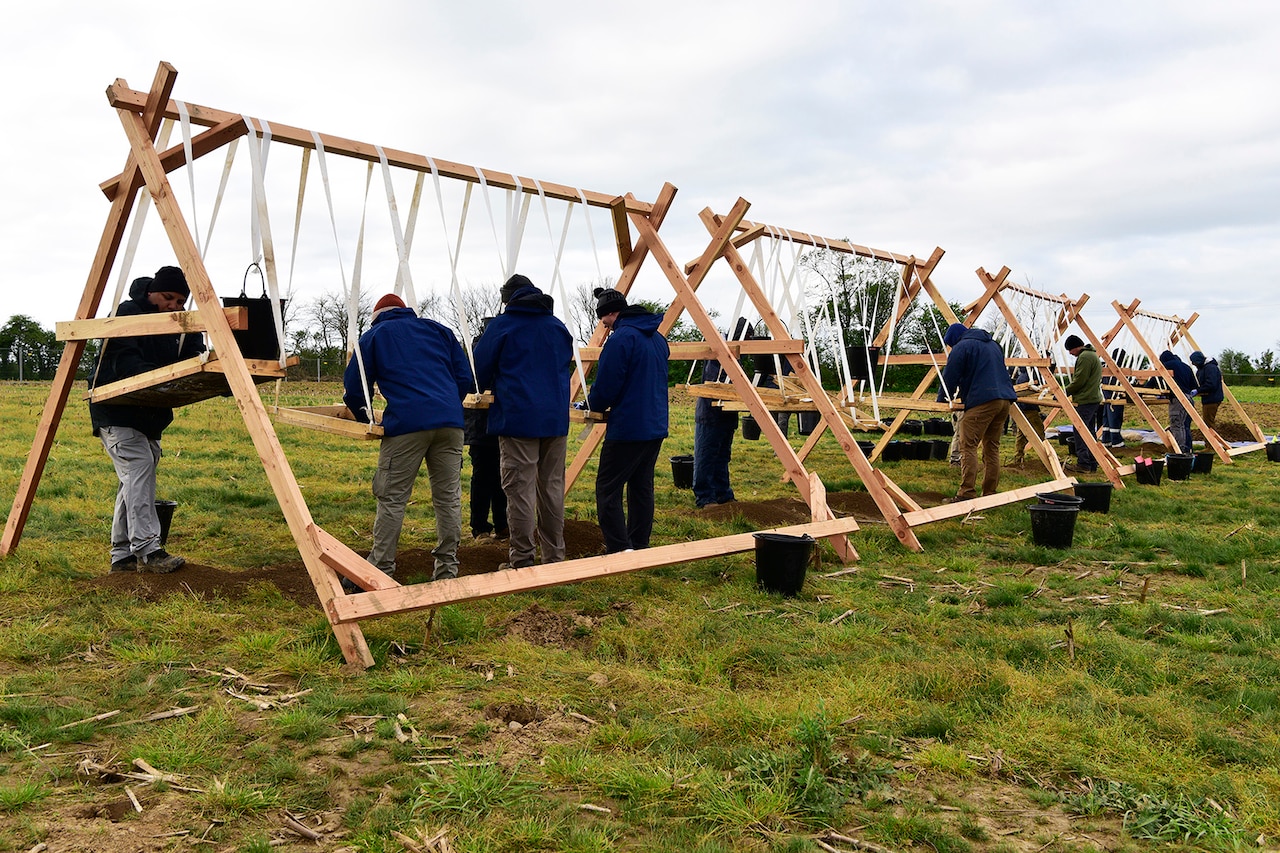In the early morning hours of June 6, 1944, a C-47A aircraft from what was then U.S. Army Air Corps’ 304th Troop Carrier Squadron, 442nd Troop Carrier Group, participated in the D-Day airborne operation in France.
The aircraft carried a crew of five, along with 14 paratroopers from the Army’s 82nd Airborne Division.
All 14 paratroopers exited the aircraft, but minutes later, the airplane was presumably shot down by German antiaircraft fire in the Normandy region. All five crew members were killed. The remains of two were later recovered, but the other three have remained missing for the last 80 years.
Now, a 25-member team from the Defense POW/MIA Accounting Agency is at the site of the crash, searching for the missing three and helping to fulfill the nation’s promise to account for all of those who are missing and return them home.
Except for a scientific recovery expert, all members of the team are soldiers and airmen, most of whom are stationed in Europe. All volunteered for this mission, which entails excavating the site situated on a farm.
Team members include specialists with a variety of skills, such as a medic, explosive ordnance disposal expert, translator, logistician, forensics photographer and a noncommissioned officer in charge.
A life-support equipment expert is also on site to identify things like pieces of uniform; personal effects like rings, watches and coins; and other items that might tie the effects to a particular service member.
Besides using their expertise for this mission, all team members also participate in carefully sifting through tons of soil by digging and screening plots of dirt in hopes of uncovering the missing, said Air Force Capt. Brian Foxworth, team leader and logistician.
This mission, which started in early April, could last until the end of this month, with digging going on eight to 10 hours daily, he said.
In some other missions, work has sometimes been suspended due to a variety of factors, and return trips are made. In other cases, recovery is deemed successful, and the site is returned to the way it was before the excavation, Foxworth noted.
In this mission, the excavated holes will be filled, and the topsoil will be returned to where it was so that the farmer can continue using it as before, he said, noting that the landowner was extremely cooperative and took a personal interest in the agency’s work.
One of the nearby residents was 8 years old when the plane crashed, and he still recalls seeing it, Foxworth mentioned.
Foxworth, who has also been on recovery missions in Vietnam and the Solomon Islands, said that a lot of preparatory work goes on in the weeks, months and years before a mission.
Many factors are related to how recovery sites are prioritized. Weather, terrain challenges, site accessibility, and various logistical and operational concerns help determine the planning and staging of recoveries.
Agency officials are also required to routinely carry out technical negotiations and talks with representatives of foreign governments in order to ensure positive and safe in-country conditions for agency service members.
The agency makes every effort to reach sites in jeopardy as soon as possible, and that, too, is a factor in prioritization. Some sites are in danger of being lost due to urbanization and/or environmental, regulatory or political issues beyond the control of the agency.
When remains are uncovered, they are sent to one of the DPAA laboratories. Foxworth said these remains will be sent to Offutt Air Force Base in Nebraska. The other lab is at Hickam Field, Hawaii.
At the lab, there are anthropologists, archaeologists, forensic odontologists and others who specialize in identifying the remains.
At the lab, forensic anthropologists are responsible for the analysis of human remains and material evidence, such as military uniforms, personal effects and identification tags.
The forensic anthropologist who’s assigned to work on the case in the laboratory is not the individual who completed the recovery in the field. This entire procedure is carried out in the “blind,” meaning the anthropologist in the lab does not know the suspected identity of the person under analysis, so that an unbiased assessment is made.
Scientists use a variety of techniques to establish the identification of people who are unaccounted for, including analysis of skeletal remains and sampling mitochondrial DNA. They also analyze material evidence, personal effects and life-support equipment. The medical examiner evaluates these overlapping lines of evidence in an effort to identify the remains.
DPAA continues to build on investigative efforts with partner governments worldwide. Each year, DPAA plans multiple investigations of World War II loss sites to collect evidence, investigate leads and conduct excavations.
Since the renewal of U.S. POW/MIA recovery efforts in the 1970s, the remains of nearly 1,000 U.S. service members killed in World War II have been identified and returned to their families for burial with full military honors. This number is in addition to the roughly 280,000 whose remains were identified in a massive effort immediately after the war.
This article, DOD Team Searching for Missing WWII Airmen in France, was first published by The Department of Defense.








